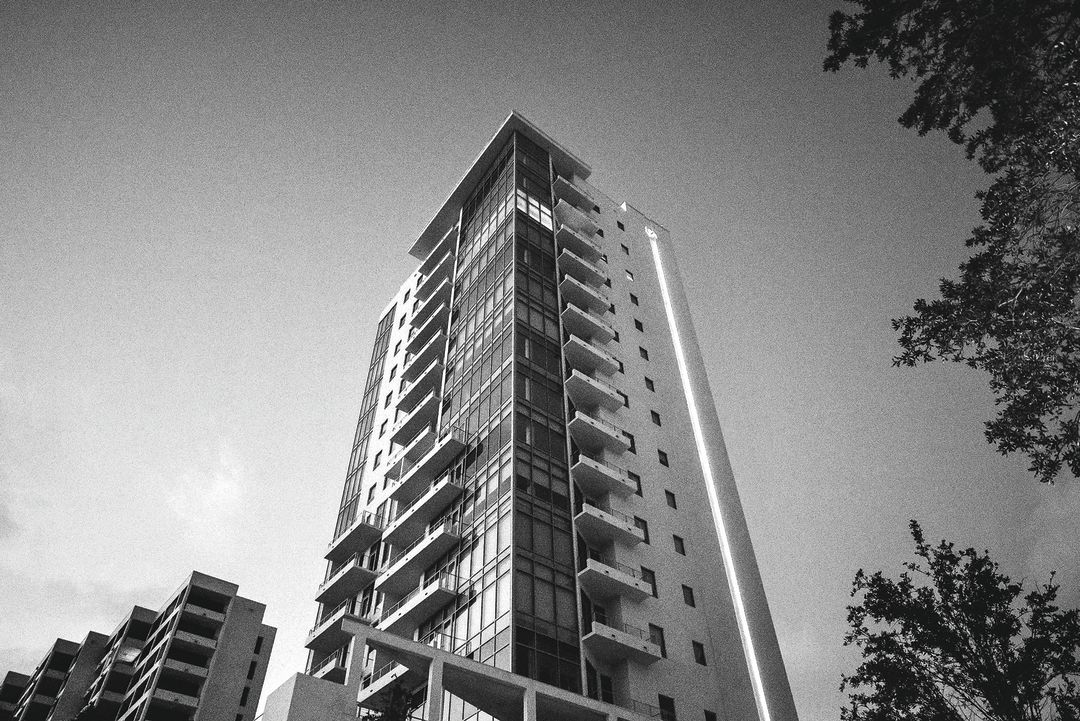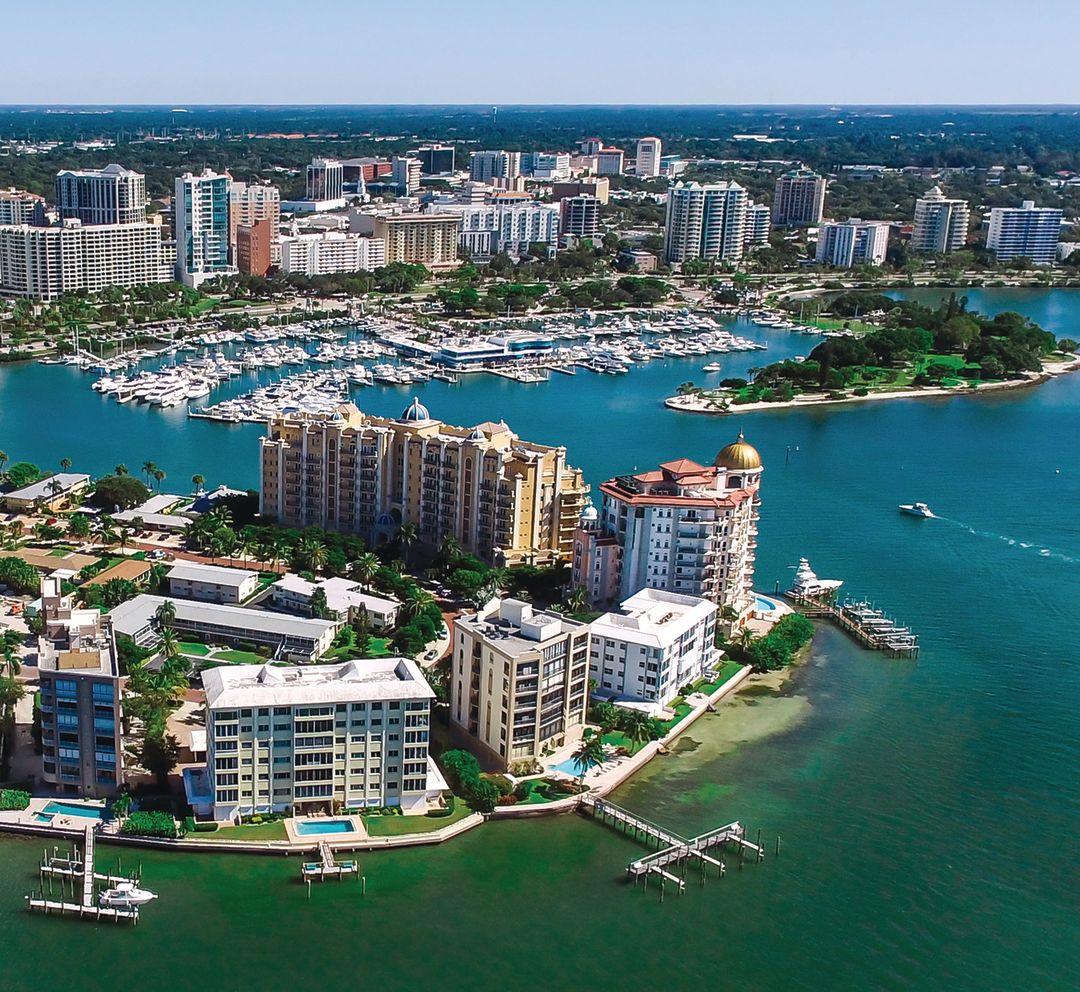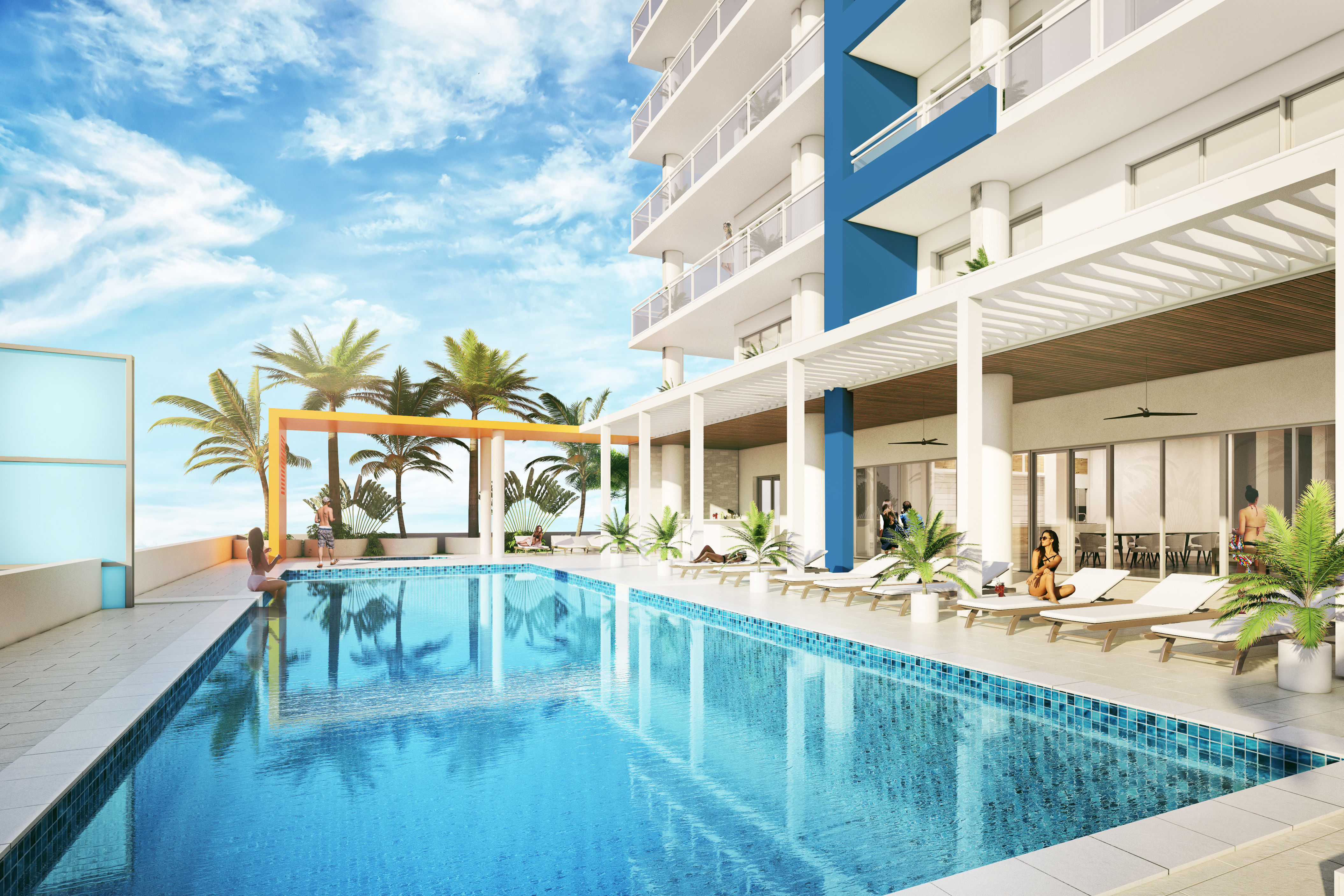What Happened to the Idea of Affordable Downtown Housing?

Image: Everett Dennison
Downtown Sarasota is in the midst of a $1 billion building boom that includes thousands of new apartments and condos. Yet it’s also facing a critical housing shortage—an affordable housing shortage. Not a single one of those new homes is affordable for most of the region’s workers.
What would be affordable?
In the North Port-Sarasota-Bradenton Metropolitan Statistical Area (MSA) in 2017, households making between $39,300 to $78,600 (the median income for a family of four in the MSA is $65,500) could afford a monthly rent in the range of $983 to $1,965.
A family in this income range could afford to buy a house priced at $131,410 at the low end and $325,315 at the upper end, according to the Sarasota Office of Housing and Community Development. But the new condo units in downtown start around $400,000 and go as high as $3 million.
What went wrong? Many Sarasotans assumed that in exchange for higher densities in some areas of downtown, developers had to build some housing that teachers, construction workers, hospital staff, restaurant servers and hotel employees could afford.
That wasn’t the case. Instead, developers were given increased density “without any requirement for affordable housing,” says Don Hadsell, director of Sarasota Office of Housing and Community Development. And, he adds, “Neither the county or the city have a mandatory inclusionary zoning ordinance” that would require developers to make a percentage of their units affordable in exchange for density bonuses.

High-rise —and high-priced—downtown housing.
Image: Everett Dennison
To those who remember the creation of the Rosemary District’s Overlay District in 2014, which increased density from 25 units per acre to 75 units per acre in a neighborhood of small, often shabby rental homes, that’s surprising. Eloquent developers who argued for the increase declared it was a matter of market forces. An increase in density would kick-start the neighborhood economy and create more affordable units.
But that’s not how it works. Jon Thaxton, a senior vice president for community investment at Gulf Coast Community Foundation, has spent years studying affordable housing. He likes to say that if market forces and density could create affordable housing, “You should be able to get a $400 a month apartment in Tokyo or New York City.” Of the more than 1,500 residential units being developed in Rosemary, including three apartment projects and 11 condominiums, not one is priced at less than $389,000, according to our research, and rents are all above the $983 that a family of four could afford.
For example, CitySide, the first new apartment project to be approved and built in the Rosemary District, is listing one-bedroom rental units starting at $1,196. Rents for available two-bedroom units at this project start at $2,080 and go up to $3,108.
Another project that received a density increase is The DeSota apartment complex, which is rising across the street from Whole Foods. In 2008, the original developer, Leonard Garner, was allowed to build 168 units instead of the zoned 42 because he promised to price units from $530 a month for a 400-square-foot studio to $1,800 a month for a three-bedroom apartment, according to a story in the Herald-Tribune. In 2013, he sold the property to software entrepreneur and downtown property owner Jesse Biter, who also promised more affordable units.
“I could put up luxury condos and make a ton of money,” he told a Herald-Tribune reporter. “That’s not what I want.” Instead, he said, he wanted workers to be able to live and play downtown. In 2015, Atlanta-based developer Carter purchased the property from Biter and named it The DeSota. In late August, in apartmentguide.com, a one-bedroom in The DeSota was listed for rent at $1,900; two-bedroom units range from $2,765 to $3,324.
Currently, the only county requirement for affordable housing is far from downtown, in Sarasota 2050 “Village” developments and in the Affordable Housing Overlay District, just east of I-75 on the north side of Palmer Boulevard. “Both require a minimum of 15 percent of the total units approved [to] meet certain affordability requirements,” Allen Parsons, Sarasota County planner, says.
Thaxton doesn’t demonize developers. They need to make a profit and they are dealing with fixed costs, such as the rising cost of land, labor and materials, he says. As builder Pat Neal of Neal Communities told our sister magazine, 941CEO, last year, “A person with an income of $49,000 can pay $148,484 for a home. I don’t think any builder can build housing in Sarasota County at that price.”
Older housing exists. The median sale price of a single-family home in Sarasota County in July 2017 was $260,000; the median condo price was $214,175. These prices remain unaffordable for that customer with an income of $49,000.
For Thaxton, the first step in creating affordable housing is like starting AA’s 12-step program. “First, acknowledge that you have a problem,” he says. And then make it a planning priority. Every time a public body, such as the school district or Sarasota Memorial Hospital, says it’s hiring more workers, commissioners should ask, “‘How is this going to affect housing?’” he says. “We have an economy dependent on a reliable service workforce.” Without figuring out where new workers will live, he predicts, “The economy will suffer the consequences.”
And like the 12-step program, creating affordable housing will require tough decisions. Officials could subsidize the costs of affordable housing, which might mean raising taxes, or require developers to include it in new projects—even though they’ll likely end up losing money on those units.
For now, the city is looking at making the Rosemary District’s overlay permanent. (It currently expires in February 2018.) But this time, developers would have to make a percentage of their units affordable in return for the density bonus. City commissioners will be discussing the proposal this fall.


